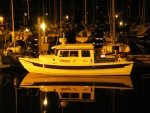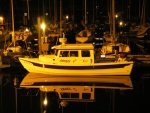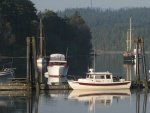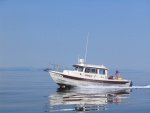RobLL
Member
- Joined
- Aug 5, 2014
- Messages
- 421
- Reaction score
- 0
- C Dory Year
- 2007
- C Dory Model
- 22 Cruiser
I got a 6 inch smart phone because I liked the camera on it. There is also a free program with charts, tides, and currents for the Pacific Northwest. It is easy to use and seems accurate. I have not used it this summer (or the boat) We got in the middle of selling a house with a LOT of paperwork, and searching for a condo in the Seattle area. We ended up finding what we wanted next to the Bremerton ferry terminal. I am looking forward to getting back on the water next month.
Chart plotter will have to be larger, cheaper, and better if they are going to stave off computers and pads. I am betting against them. They are, to put it simply, a more water and corrosion resistant computer with a display screen, with the capability for a variety on inputs.
My automobile Garmin is still a little simpler to use than my smart phone, but the smart phone does not repeatedly screw up finding destinations or misdirecting me onto impossible routes.
Chart plotter will have to be larger, cheaper, and better if they are going to stave off computers and pads. I am betting against them. They are, to put it simply, a more water and corrosion resistant computer with a display screen, with the capability for a variety on inputs.
My automobile Garmin is still a little simpler to use than my smart phone, but the smart phone does not repeatedly screw up finding destinations or misdirecting me onto impossible routes.





